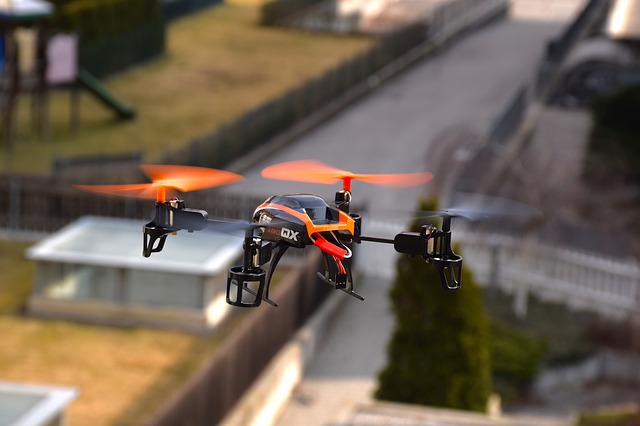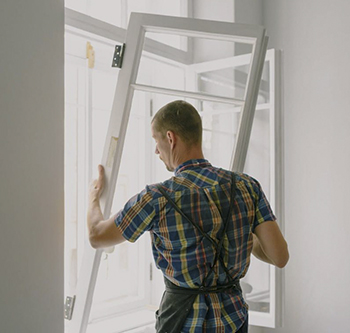Drone regulations and safety
There is a growing use of drones in construction. Their aerial use is governed by a well-established regulatory framework devised for the commercial use of unmanned aircraft. There are also the health and safety concerns for individuals working in the vicinity of the flight area.
As the technology and its uses continue to evolve, it will be wise to keep an eye on further legislation in regard to drone use.
This article provides a guide to regulations and good practice under current law in respect of commercial operation:
- The operator must hold a permit (PfCO) issued by the Civil Aviation Authority.
- The drone with equipment attached must be registered in the correct weight and sensor category:
- 0-7 kg (small unmanned aircraft - SUA).
- 7-20 kg (larger drone).
- 20 kgs and over.
- SUAs (majority used in construction) may be operated in congested areas providing they are not brought within 50 m of any person, structure or vehicle outside the control of the drone’s operational management. This is reduced to 30 m during take off and landing.
- Larger drones are prohibited to fly within 150 m of a city, town or area substantially populated through commercial or residential use.
- The standard PfCO stipulates a maximum 500 m distance line of sight at all times by operator visibility to the naked eye (VLOS).
- Maximum height of a SUA must not exceed 122 m above the level of take-off.
- The commercial operator must carry insurance in compliance with EC Regulation 785/2004.
With regard to health and safety, management employing the commercial use of a drone should:
- Check the licenses, qualifications, competence and experience of the operator.
- Prepare a clear brief in regard to the data required.
- Consider any neighbour objections in regard to privacy.
- Provide an induction session for the operator and its team.
- Approve the flight plans, risk assessment and timetables with special attention to hazards and aerial obstructions such as crane movements, aerial masts and cables.
- Check insurances are in order.
- Inform all personnel affected by the planned flights of the flight plans to protect their safety. This might include external parties such as emergency services that use helicopters.
- Agree an emergency procedure in the event of drone or controls mechanical failure.
- Agree copyright ownership and privacy terms on data acquired by the drone prior to instruction.
- Obtain signed confirmation by the operator prior to flight that the conditions and circumstances are safe.
[edit] Related articles on Designing Buildings
- Construction drones.
- Construction Site Security guide.
- Drones as a Service DaaS.
- Health and safety.
- How can drones transform construction processes?
- Mitie - drone pest control inspection.
- Paint by drone.
- Post processed kinematic PPK.
- Risk assessment for construction.
- Risk management.
- Safety audit.
- Uses of drones in construction.
- Using drones for inspection and survey.
Featured articles and news
Licensing construction in the UK
As the latest report and proposal to licence builders reaches Parliament.
Building Safety Alliance golden thread guidance
Extensive excel checklist of information with guidance document freely accessible.
Fair Payment Code and other payment initiatives
For fair and late payments, need to work together to add value.
Pre-planning delivery programmes and delay penalties
Proposed for housebuilders in government reform: Speeding Up Build Out.
High street health: converting a building for healthcare uses
The benefits of health centres acting as new anchor sites in the high street.
The Remarkable Pinwill Sisters: from ‘lady woodcarvers’ to professionals. Book review.
Skills gap and investment returns on apprenticeships
ECA welcomes new reports from JTL Training and The Electrotechnical Skills Partnership.
Committee report criticises UK retrofit schemes
CIOB responds to UK’s Energy Security and Net Zero Committee report.
Design and construction industry podcasts
Professional development, practice, the pandemic, platforms and podcasts. Have we missed anything?
C20 Society; Buildings at Risk List 2025
10 more buildings published with updates on the past decade of buildings featured.
Boiler Upgrade Scheme and certifications consultation
Summary of government consultation, closing 11 June 2025.
Deputy editor of AT, Tim Fraser, discusses the newly formed society with its current chair, Chris Halligan MCIAT.
Barratt Lo-E passivhaus standard homes planned enmasse
With an initial 728 Lo-E homes across two sites and many more planned for the future.
Government urged to uphold Warm Homes commitment
ECA and industry bodies write to Government concerning its 13.2 billion Warm Homes manifesto commitment.
From project managers to rising stars, sustainability pioneers and more.
Places of Worship in Britain and Ireland, 1929-1990. Book review.























